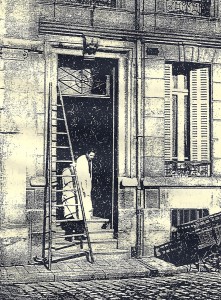Painters have long known about the hazards of lead. Lead in paints was made illegal in the United States in 1978. In France and other European countries, it was banned in the late 1910’s. However, the hazards of exposure to lead dust and vapors had been known and documented nearly 250 years earlier!
A painter from Paris, by the name of J. L. Watin, published a book in 1772 entitled: “ The Art of Painting, Gilding and Varnishing” (translation). Among other things, this book graphically describes the symptoms of a disease known as “painters’ colic” or “ceruse”. What was he talking about?
What Mr.Watin was describing were the effects of lead poisoning arising out of the work practices of folks involved in trades that generated lead dust or lead vapors, like painters, metal workers, decorators etc.. At this point in time, lead was even used to “soften” wines and were called “vins sophistiques” (sophisticated wines). Work practices were indeed unreflective of the actual dangers of lead, such as wetting one’s brush with one’s saliva.
The author goes on to describe the symptoms of lead poising, for painters in particular. First, there is an acute pain in the stomach area, difficulty breathing, anxiety, and vomiting. As the disease progressed, the pain level would grow. I will spare the graphic descriptions given by the author. The picture I made part of this story depicts a victim of “painters’ colic” being hauled out of his house. Next to the front entrance were his ladder and cart.
Fortunately, times have changed. Knowledge and awareness have grown and lead poisoning of the intensity described in Mr. Watin’s book have all but disappeared. The work practices of the painting industry are now regulated by EPA lead rules known as RRP Rules. Contractors now have to be “Certified Lead Safe Firms” and the painters have to be certified as well. I am happy to say that Painting in Partnership, from the Chicago area, is a “Lead Safe Firm” and that several of its employees are certified as well.








 Follow
Follow

Great article, and finding of information. EPA’s regs can only help those who work with such contaminants.